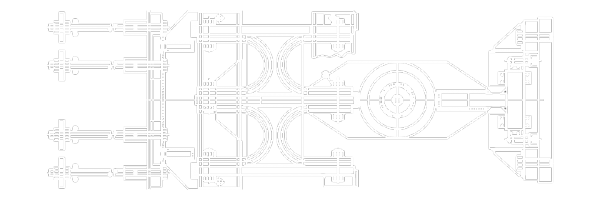Rigid connection devices
TENSA’s rigid connection devices are the most suitable solution when a modification on the structure’s response is required. In fact, they can modify the structure’s condition from static to dynamic and distribute the entrance seismic force in different positions.
Key advantages

- Possibility to spread the horizontal force to different structural elements
- Possibility to modify the coinstraint scheme at the different condition (service and seismic)
- Self-compensation of the internal volumetric changes.
- Insensitivity to aging, stability of viscosity with temperature
Systems available

The TSTD are temporary oleodynamic connection devices.
Under an impulsive external force, the device becomes temporarily a “pseudo-rigid” connection linking two elements of the structure. At the presence of slowly imposed movements, the device develops a negligible reaction.
This device consists of a steel cylinder divided into two chambers by the presence of a piston. Those chambers are filled by silicone-based oil.







